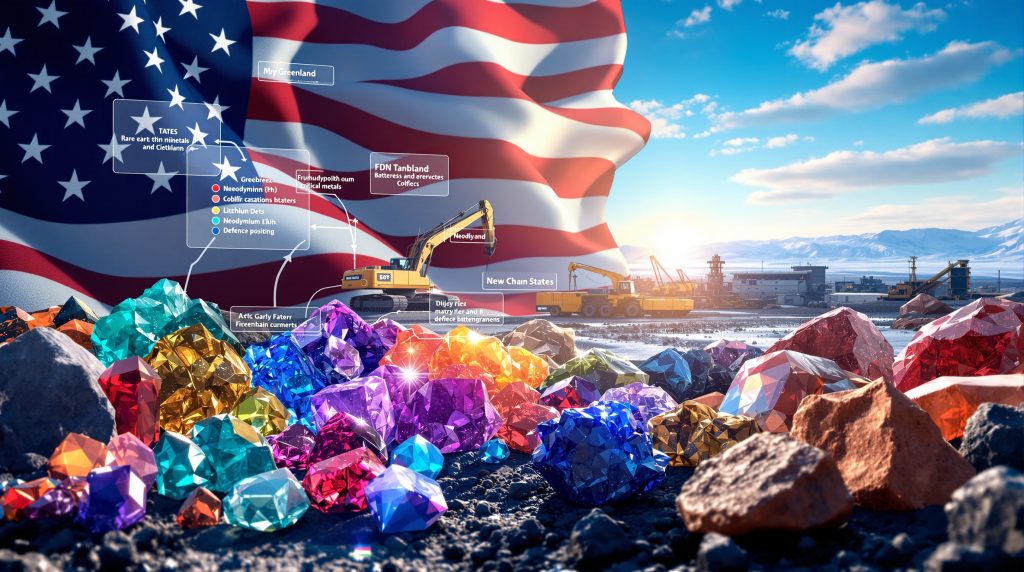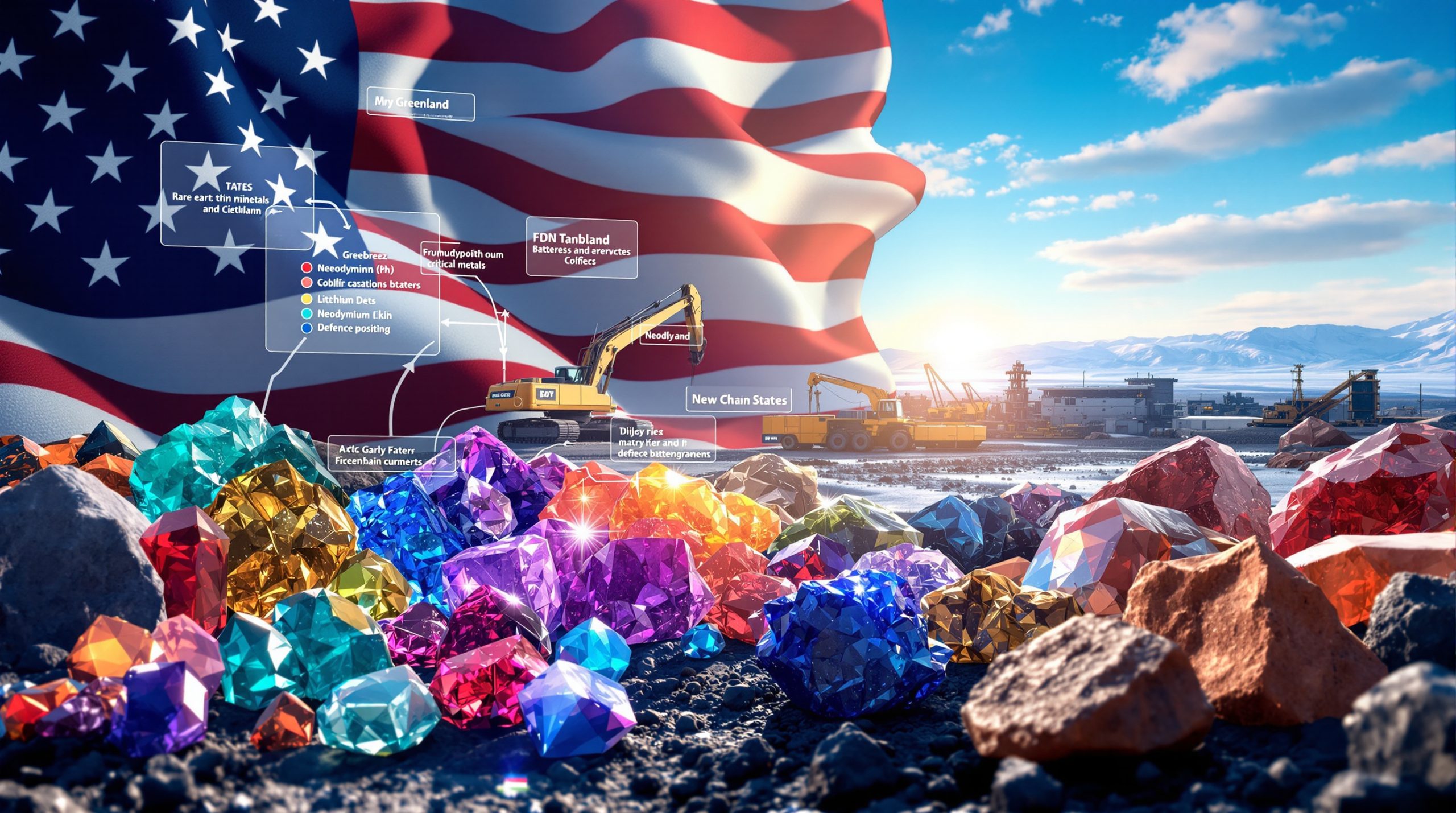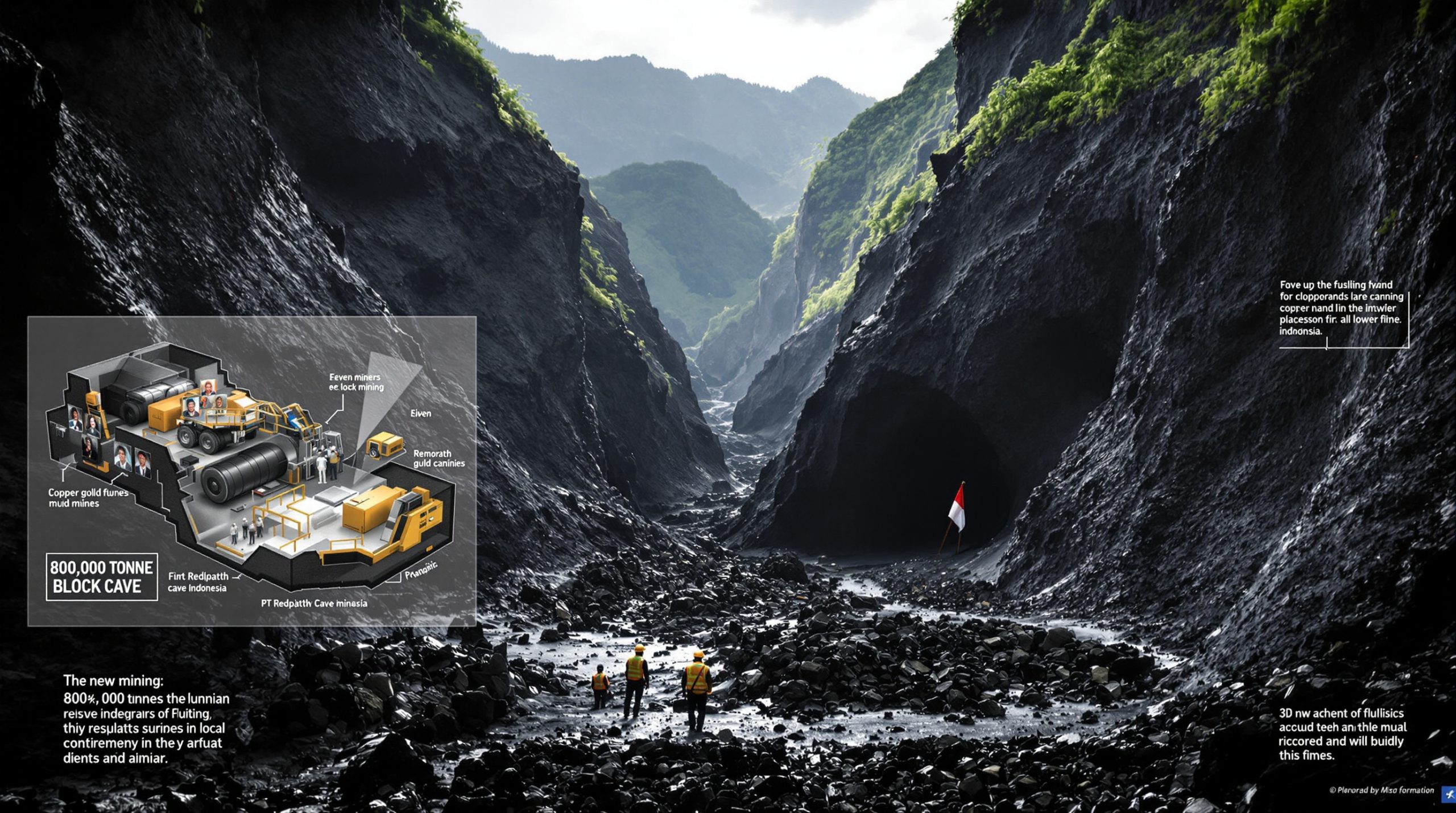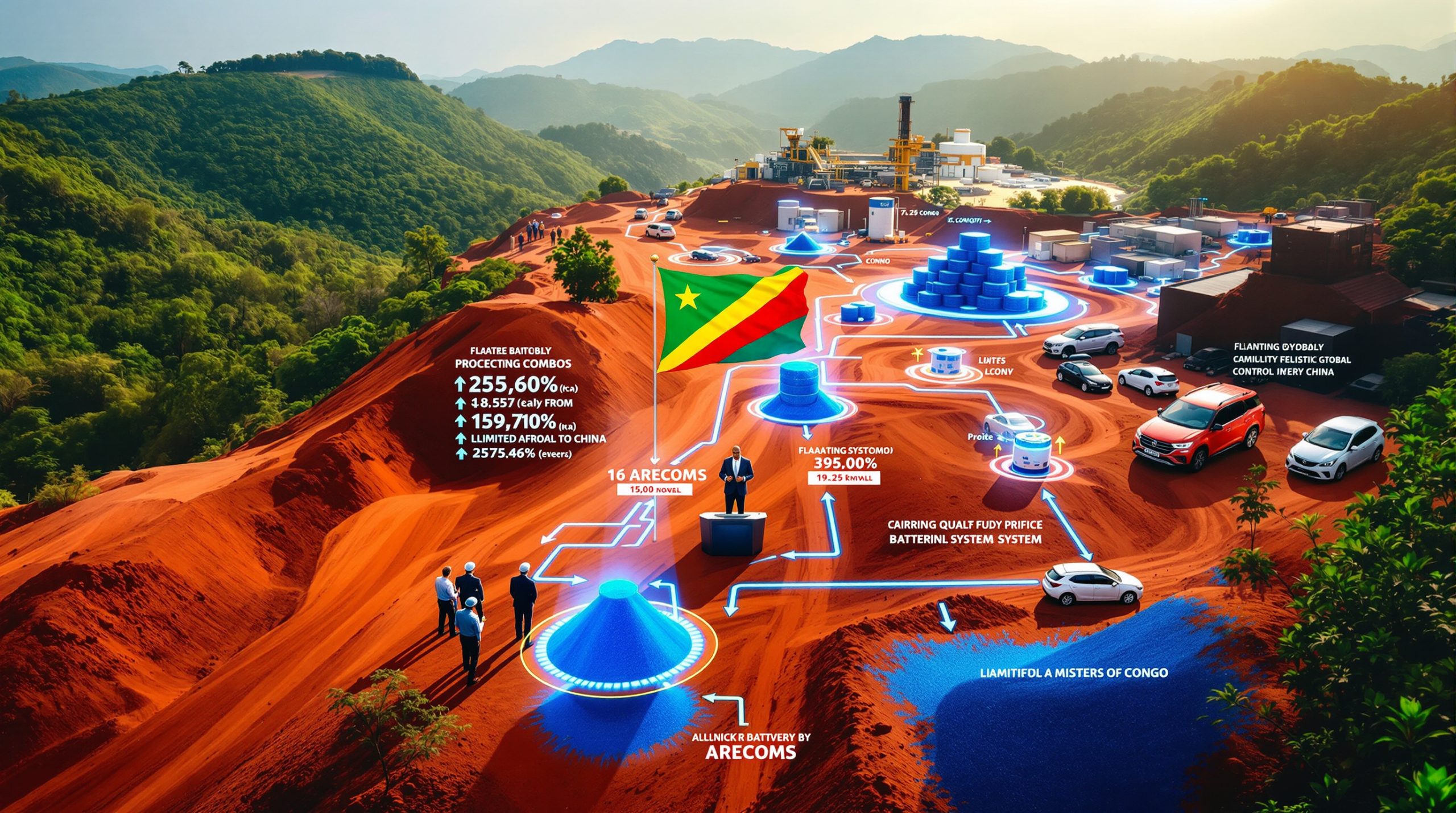How is the US Government Securing Critical Minerals Supply Chains?
The United States government is taking unprecedented steps to secure access to critical minerals essential for clean energy technologies, defense applications, and high-tech manufacturing. Recent developments reveal a strategic shift toward direct investment in mining operations, particularly those involving rare earth elements and other critical minerals. The US Government talks with Critical Metals represent a significant evolution in how America approaches resource security for these vital materials.
What Are Critical Minerals and Why Do They Matter?
The Strategic Importance of Critical Minerals
Critical minerals encompass a range of elements essential for modern technology, including rare earth elements, lithium, cobalt, and nickel. These materials form the backbone of everything from electric vehicle batteries to wind turbines, smartphones, and advanced defense systems.
The strategic value of these minerals extends beyond economic considerations to national security, as they enable cutting-edge military technologies and communication systems that provide tactical advantages in modern warfare. Furthermore, their role in the energy transition impact cannot be overstated as nations race toward net-zero carbon goals.
Supply Chain Vulnerabilities Exposed
The global supply chain for critical minerals faces significant challenges that have become increasingly apparent in recent years. Foreign dependency has created strategic weaknesses that policymakers are now rushing to address.
China currently dominates the processing capacity for many critical minerals, controlling approximately 85% of the global rare earth processing industry. This concentration of power creates significant leverage that could potentially be weaponized during geopolitical disputes.
Limited domestic production within the United States has created serious national security concerns, particularly as demand continues to rise with the acceleration of green technology adoption. In response, the administration has issued an executive order on mineral production to accelerate domestic capacity development.
Geopolitical tensions increasingly threaten reliable access to essential materials, with recent trade disputes highlighting the fragility of international supply networks.
The clean energy transition is dramatically increasing competition for limited resources, with demand for lithium projected to increase by 4,000% by 2040 according to International Energy Agency forecasts.
Defining the Critical Minerals List
The U.S. government maintains an official list of minerals deemed critical to economic and national security. This list undergoes periodic revisions to reflect changing technological needs and supply risk assessments as part of the national critical minerals strategy.
| Mineral Category | Key Examples | Primary Applications |
|---|---|---|
| Rare Earth Elements | Neodymium, Dysprosium | Permanent magnets, electronics |
| Battery Metals | Lithium, Cobalt, Nickel | Electric vehicles, energy storage |
| Industrial Metals | Aluminum, Titanium | Aerospace, construction |
| Technology Metals | Gallium, Germanium | Semiconductors, solar panels |
The U.S. Geological Survey performs annual assessments of these minerals, evaluating factors including supply risk, production concentration, and substitution potential to determine criticality.
What New Approach is the US Taking with Critical Minerals Companies?
Direct Investment Strategy Emerges
Recent reports indicate the U.S. government is pursuing direct equity investments in critical minerals companies, marking a significant shift from traditional approaches like grants and loans. According to Reuters reporting, this new strategy has already sparked significant market interest, with Critical Metals shares surging upon news of potential government investment.
This evolution represents a fundamental change in strategy, moving from purely regulatory and financial support mechanisms toward active ownership stakes in strategic assets. The approach mirrors models used by countries like China and Japan that have long maintained strategic investments in resource companies.
Industry analysts note this shift acknowledges the limitations of previous policies that failed to adequately secure supply chains through market mechanisms alone.
The Critical Metals Corporation Case Study
In October 2025, the US Government talks with Critical Metals entered a decisive phase, with discussions to acquire a stake in the corporation which controls the Tanbreez project in Greenland. This potential acquisition represents a new approach to securing supply chains through direct ownership.
The negotiations came shortly after Critical Metals increased its ownership of the Tanbreez project from 42% to 92.5%, leaving European Lithium with a 7.5% minority position. This consolidation of ownership created an attractive opportunity for strategic investment by the United States.
The project's recent $35 million private investment from an institutional investor provides additional validation of its commercial viability and strategic importance.
Key Elements of the Potential Deal
The proposed transaction includes several noteworthy components that reveal the strategic thinking behind the government's new approach.
The deal centers on a direct equity stake in Critical Metals Corporation, providing the U.S. government with board representation and influence over strategic decisions related to mineral production and distribution.
This investment would secure privileged access to the 4.7-billion-tonne rare earth deposit at Tanbreez, one of the world's largest concentrations of these critical elements.
The location provides strategic positioning in Greenland's mineral-rich territory, establishing a foothold in an increasingly competitive Arctic resource landscape.
The arrangement would serve as a counterbalance to competing international interests in Arctic resources, particularly as Russia and China pursue aggressive Arctic strategies.
How Does the Tanbreez Project Fit into US Strategic Interests?
Tanbreez Project Overview
The Tanbreez project represents one of the world's largest rare earth deposits, located in southern Greenland near Qaqortoq. This permitted project stands ready for development with several key characteristics that make it strategically valuable.
The massive 4.7 billion tonnes of rare earth minerals represent a generational resource that could support decades of production at commercial scale.
Unlike many prospective mining projects, Tanbreez has already secured its key permits for development, removing significant regulatory hurdles that typically delay production.
Greenland's status as a territory within the Kingdom of Denmark, a NATO ally, provides geopolitical advantages compared to deposits in less friendly or stable jurisdictions.
The deposit is particularly rich in heavy rare earth elements critical for defense applications, including terbium and dysprosium used in precision-guided weapons systems and night vision technology.
Recent Ownership Changes
Critical Metals Corporation recently increased its stake in the Tanbreez project from 42% to 92.5%, with European Lithium retaining a 7.5% minority position. This consolidation of ownership precedes the U.S. government's interest in acquiring a stake.
The transaction structure involved Critical Metals issuing approximately 14.5 million ordinary shares to Rimbal, implying a price of $8 per share. This fixed-share arrangement amended the original agreement that had stipulated an unspecified number of shares valued at $116 million.
Industry analysts note the timing of this ownership consolidation, occurring just before potential government investment discussions, suggests a coordinated strategy to create a more streamlined governance structure attractive to sovereign investors.
Production Timeline and Potential
The project's development timeline includes several key milestones that align with the U.S. government's critical minerals security objectives.
Initial financing has been secured through a $35 million private investment from an institutional investor, providing capital for preliminary development activities.
Commercial production is expected within 3-5 years, a relatively short timeline compared to many mining projects that can take decades to reach production.
When operational, the project has the potential to significantly reduce U.S. dependence on foreign sources, particularly China, for heavy rare earth elements essential to defense and clean energy applications.
What Other Initiatives is the US Government Pursuing?
Comprehensive Critical Minerals Strategy
The U.S. government's approach to critical minerals extends beyond individual investments to include a coordinated set of initiatives designed to address vulnerabilities throughout the supply chain.
Domestic mining revitalization efforts include streamlined permitting processes for projects on federal lands and tax incentives for new mine development in strategic mineral categories.
Processing capacity development has become a major focus, with funding directed toward establishing rare earth separation facilities and battery material refineries within U.S. borders.
International partnerships with allied nations, particularly through the Minerals Security Partnership launched in 2022, coordinate investment in projects across friendly jurisdictions from Australia to Zambia.
Research into alternative materials and recycling has received increased funding, with programs seeking to reduce dependence on the most supply-constrained elements.
Strategic stockpiling of essential materials has expanded beyond traditional defense metals to include battery materials and rare earth elements.
Financial Support Mechanisms
Various financial tools are being deployed to support critical minerals projects, creating a layered approach that addresses different points of vulnerability in the supply chain.
Direct equity investments in strategic companies represent the newest and most interventionist approach, giving the government actual ownership stakes in key assets.
Loan guarantees through the Export-Import Bank have been expanded for mining and processing projects, with a recent strategic antimony loan highlighting the focus on minerals essential for defense applications.
Defense Production Act funding has been allocated for processing facilities, with hundreds of millions directed toward rare earth separation and magnet manufacturing.
Tax incentives for domestic production and processing include accelerated depreciation schedules and credits for projects meeting strategic mineral criteria.
Public-Private Partnerships
The government is increasingly partnering with private industry through creative arrangements that leverage the strengths of both sectors.
Joint ventures for mining and processing allow government entities to participate in project development while benefiting from private sector expertise in project execution.
Offtake agreements guaranteeing markets for production provide certainty for project developers while securing material flows for strategic stockpiles or critical industries.
Research collaborations for more efficient extraction technologies pair national laboratory capabilities with private sector commercialization expertise.
Workforce development initiatives are addressing the skills gap in mining and processing, with targeted programs at community colleges in regions with mineral development potential.
What Challenges Does the US Face in Critical Minerals Development?
Regulatory and Environmental Hurdles
Despite strategic importance, critical minerals projects face significant challenges that complicate rapid supply chain transformation.
Complex permitting processes that can delay development often involve multiple agencies at federal, state, and local levels with overlapping jurisdictions and sometimes conflicting mandates.
Environmental concerns regarding extraction impacts remain significant, particularly for operations involving chemical processing or potentially affecting groundwater resources.
Community opposition to new mining operations has emerged as a major hurdle, with local stakeholders often skeptical of economic benefit claims and concerned about long-term environmental impacts.
Balancing economic security with environmental protection creates tension between agencies with different primary missions, complicating policy coordination.
International Competition
The global race for critical minerals involves multiple players with different advantages and strategies, creating a complex competitive landscape.
China's established dominance in processing and production provides economies of scale and integrated supply chains difficult for new entrants to match.
The European Union's CRM facility developments represent a competing approach to secure critical materials, potentially creating competition for limited resources and investment capital.
Canada and Australia's strategic minerals initiatives include government support and investment in projects competing for similar pools of development capital and technical talent.
Emerging producer nations in Africa and South America are seeking investment and partnerships, but often lack infrastructure or present elevated political risks.
Technological and Economic Barriers
Additional challenges include fundamental business and technical constraints that limit the pace of supply diversification.
High capital costs for developing new mines can exceed billions of dollars for large projects, creating significant financing challenges even with government support.
Technical complexity of processing certain minerals, particularly separating rare earth elements, requires specialized expertise that is in short supply outside China.
Price volatility affecting investment decisions creates uncertainty for project developers, as critical mineral prices can fluctuate dramatically based on policy changes or technological shifts.
Long lead times from discovery to production mean that even aggressive policies may take years to significantly alter supply dynamics.
How Might Direct Government Investment Change the Critical Minerals Landscape?
Precedent-Setting Implications
The potential government stake in Critical Metals Corporation could establish a new model for critical minerals security with several implications for market structure and government role.
This approach signals stronger government commitment to supply chain security than previous policy tools, demonstrating willingness to take direct ownership positions rather than relying on indirect incentives.
The model creates a template for future investments in strategic resources, potentially establishing a sovereign wealth approach to resource security similar to that used by petroleum-importing nations.
The strategy blurs traditional lines between private enterprise and national security interests, potentially creating new governance models for strategically important industries.
Project development timelines could accelerate significantly when government backing reduces financing uncertainty and potentially streamlines regulatory approvals.
Market Reactions and Investment Climate
Government involvement could significantly impact the investment landscape for critical minerals, altering risk perceptions and capital flows.
Investor confidence in the critical minerals sector may increase as government participation reduces policy uncertainty and signals long-term demand support.
Competition concerns could emerge among purely private enterprises worried about competing with government-backed entities that may have advantages in financing or regulatory treatment.
Price floors or stability mechanisms might develop as government participation reduces extreme price volatility, potentially through stockpiling during price downturns.
International investment patterns may shift as other nations respond with similar strategic investment models, potentially triggering a new era of resource nationalism focused on critical minerals.
Long-Term Strategic Considerations
The evolving approach raises important questions about fundamental relationships between government and industry in strategic sectors.
Finding the appropriate balance between government and private sector roles remains challenging, with concerns about market distortions competing with national security imperatives.
Questions about the sustainability of direct government ownership in mining assets emerge as political priorities shift with successive administrations.
International reactions to more assertive resource nationalism may include retaliatory measures or copycat policies that fragment global markets.
Integration with broader industrial and defense policies requires coordinated planning across multiple agencies with different mandates and timeframes.
What Does This Mean for the Future of Critical Minerals Supply?
Reshaping Global Supply Chains
The US Government talks with Critical Metals could fundamentally alter critical minerals markets over the coming decade if they lead to a new model of government participation in the sector.
Diversification away from dominant suppliers will accelerate, reducing China's market share in processing and production while creating new centers of activity in North America, Europe, and Australia.
New processing hubs in allied nations will emerge, supported by government investment and offtake guarantees that reduce commercial risks.
More transparent and resilient supply networks will develop as governance requirements associated with government participation increase disclosure and contingency planning.
Costs may increase in exchange for security, at least in the short term, as economies of scale from concentrated production are sacrificed for redundancy and geopolitical risk reduction.
Technology and Innovation Impacts
Strategic investments may drive technological development that transforms the economics and environmental profile of critical minerals production.
Alternative materials research will receive increased funding as governments seek to reduce dependence on the most supply-constrained elements through substitution.
Recycling technologies will advance rapidly with policy support, potentially creating significant secondary supply streams for certain critical minerals within the decade.
Previously uneconomic deposits may become viable through new extraction techniques specifically designed for lower-grade or more complex mineralogy.
Advanced processing methods to reduce environmental impacts will develop more quickly with government research support and regulatory incentives.
Geopolitical Implications
The shift toward more direct government involvement has significant international dimensions that will reshape resource diplomacy.
New resource-focused alliances and partnerships are emerging, sometimes separate from traditional security arrangements, as nations align based on complementary mineral endowments and processing capabilities.
Competition for access to deposits in developing nations is intensifying, with investment packages increasingly including diplomatic and security components.
Trade agreements are increasingly incorporating critical minerals provisions, with preferential treatment for allied suppliers and processors.
Arctic resources and governance are receiving heightened attention as awareness grows of the region's mineral potential and strategic importance.
FAQ: US Government and Critical Minerals Strategy
Why is the US government considering direct investment in mining companies?
The U.S. is pursuing direct investment to secure access to critical minerals essential for clean energy, defense, and high-tech manufacturing. This approach reflects recognition that market mechanisms alone have failed to diversify supply chains sufficiently, particularly for rare earth elements where China maintains dominant market position. Direct investment provides more control than loans or grants while ensuring strategic materials are available to domestic industries.
How does the Tanbreez project compare to other rare earth deposits?
The Tanbreez project in Greenland represents one of the world's largest rare earth deposits at 4.7 billion tonnes. Unlike many deposits that focus primarily on light rare earths like neodymium, Tanbreez contains particularly valuable concentrations of heavy rare earth elements such as dysprosium and terbium. The deposit's size and composition, combined with its permitted status and location in a politically stable region, make it uniquely valuable in the global rare earth landscape.
What precedents exist for government ownership in mining operations?
While uncommon in the U.S. historical context, government ownership of strategic resource companies is well-established globally. China's state-owned enterprises dominate its rare earths sector, allowing coordination of production and export policies. Norway's state participation in oil and gas development through Equinor (formerly Statoil) demonstrates how democratic nations can successfully maintain sovereign ownership in resource extraction. Chile's partial ownership of copper producer Codelco provides another model for maintaining national benefit from strategic resources.
How might this approach affect private investment in critical minerals?
Government participation could have dual effects on private capital flows. On one hand, it might crowd out private investment by creating unfair competition through preferential regulatory treatment or subsidized capital. Conversely, government participation could catalyze private investment by reducing perceived risks, establishing price floors through purchasing commitments, and signaling long-term market stability. The specific structure of government participation programs will largely determine which effect predominates.
What timeline can be expected for developing new critical minerals projects?
Even with government support, new mining projects typically require 7-10 years from discovery to production due to exploration, resource definition, feasibility studies, permitting, and construction phases. Existing projects like Tanbreez with permits already in place may move faster, potentially reaching production within 3-5 years. Processing facilities generally have shorter development timelines but still require 2-4 years for construction and commissioning. Recycling operations represent the quickest path to increased domestic supply, potentially ramping up within 1-2 years with adequate policy support.
Interested in Getting Ahead of Major ASX Mineral Discoveries?
Don't miss out on potentially transformative investment opportunities in the resources sector. Visit Discovery Alert's dedicated discoveries page to understand how their proprietary Discovery IQ model delivers real-time alerts on significant mineral discoveries, giving you a crucial market advantage before the broader market reacts.




